Earth Colours
There are some wonderful ancient earth pigments that are used to create useful colours for the palette. Classic colours include Raw Sienna, Burnt Sienna, Raw Umber, Burnt Umber and Indian Red. There are also many ochres, Yellow Ochre being the best known, but also including Red Ochre, Brown Ochre and even Blue Ochre (Vivianite). Often one pigment is heated to create the other so the lighter neutral orange Raw Sienna becomes the richer, darker Burnt Sienna when heated. Equally, the cool brown Raw Umber becomes the rich deep brown Burnt Umber, but all these pigments are PBr7. Many of the colours can be created by mixing the 6 split primaries, but the pigments have characteristics that make them valuable for more than just their hue. I recommend Burnt Sienna (PBr7) and Goethite (PY43) or Yellow Ochre (PY43) as really useful additions even to a limited palette. For convenience you may also like to add Burnt Umber and Indian Red, especially if doing a lot of landscape painting. Another useful favourite is the cool deep cool brown Raw Umber - I recommend Da Vinci or Daniel Smith.
For a full range of the earth colours, and in fact all colours available, have a look at the remarkable website handprint.com or click on the link below.
For a full range of the earth colours, and in fact all colours available, have a look at the remarkable website handprint.com or click on the link below.
Burnt Sienna
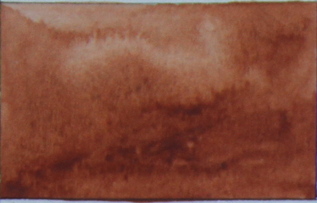
Burnt Sienna PBr7. Daniel Smith watercolour
Burnt Sienna is an ancient colour, made by roasting Raw Sienna, so both colours are made with the pigment PBr 7. It is the most useful earth colour in the palette, as it combines with its opposite, Ultramarine, to form a range of blues, greys and browns (see below). It will create a range of mossy greens if mixed with a Sap Green (which can be made from Phthalo Green and Quinacridone Gold) and wonderful flesh tones when diluted with water, with or without the addition of other colours.
Mixed with a yellow it creates a yellow ochre and raw sienna hue, mixed with a blue it creates a myriad of greys, browns and deep blues and mixed with a red a wonderful range of neutralised red hues. Mixed with a green it can create a range of more mossy greens and very interesting neutrals with a purple - it's a magic colour!
It varies considerably from one manufacturer to another. The Art Spectrum Natural version is slightly more red and very granular - really wonderful for achieving a very granulated appearance (see chart below). Schminke make a browner version. Some manufacturers use mixes with PR101 and other pigments altogether, and should be labelled as a 'hue'. It is always best to use the true pigment if you want to be sure of getting the characteristics you expect. This Daniel Smith and Da Vinci versions are both a lovely versions of a relatively transparent neutral orange. Winsor & Newton uses PR101 to create a brighter, more orange version, which some people prefer. I'd rather use PBr7 for Burnt Sienna and choose a Quinacridone Burnt Orange if I want a brighter mixing option.
(For a comparison of different Burnt Sienna options see my Blog entry here)
Mixed with a yellow it creates a yellow ochre and raw sienna hue, mixed with a blue it creates a myriad of greys, browns and deep blues and mixed with a red a wonderful range of neutralised red hues. Mixed with a green it can create a range of more mossy greens and very interesting neutrals with a purple - it's a magic colour!
It varies considerably from one manufacturer to another. The Art Spectrum Natural version is slightly more red and very granular - really wonderful for achieving a very granulated appearance (see chart below). Schminke make a browner version. Some manufacturers use mixes with PR101 and other pigments altogether, and should be labelled as a 'hue'. It is always best to use the true pigment if you want to be sure of getting the characteristics you expect. This Daniel Smith and Da Vinci versions are both a lovely versions of a relatively transparent neutral orange. Winsor & Newton uses PR101 to create a brighter, more orange version, which some people prefer. I'd rather use PBr7 for Burnt Sienna and choose a Quinacridone Burnt Orange if I want a brighter mixing option.
(For a comparison of different Burnt Sienna options see my Blog entry here)
Neutrals and greys - Burnt Sienna + Ultramarine Blue

Art Spectrum Burnt Sienna (left) mixd with Daniel Smith Ultramarine (right).
One of the most useful combinations! This mixture is much more lively than a bought Paynes Grey, which usually contains black. For convenience, premix equal quantities of Burnt Sienna and Ultramarine in your palette to make a neutral grey and let it dry for a ready-made bistre that I call Jane's Grey.
Neutralised oranges - Burnt Sienna + Cadmium Yellow Light

Useful for flesh tones. Note the yellow ochre and raw sienna hues in this mix.
Raw Sienna
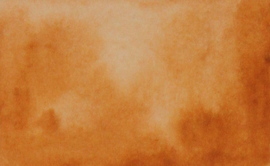
Raw Sienna. Daniel Smith watercolour.
PBr 7. A beautiful neutral orange-yellow. In my explorations, the Daniel Smith version is the most lovely. Many others are more like a yellow ochre. Another options is Quinacridone Gold or Quinacridone Gold Deep.
One of the special qualities of Raw Sienna is that it doesn't really make greens when mixed with a blue so can be gorgeous in a sky as the warm yellow glaze above the horizon, with the blue above and no green!
One of the special qualities of Raw Sienna is that it doesn't really make greens when mixed with a blue so can be gorgeous in a sky as the warm yellow glaze above the horizon, with the blue above and no green!
Neutralised yellows - Raw Sienna + Cadmium Yellow Light

Raw Sienna (left) mixed with cadmium Yellow Light (right)
These are quite close together but create yellow ochre hues.
Yellow Ochre
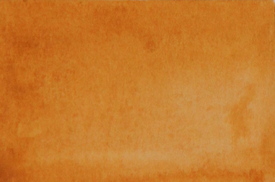
Yellow Orchre. Daniel Smith watercolour.
One of the oldest known pigments. Generally opaque. The best versions are made with
PY 43, rather than PY42 which is a synthesised version and may be called Yellow Oxide.
PY 43, rather than PY42 which is a synthesised version and may be called Yellow Oxide.
Raw Umber
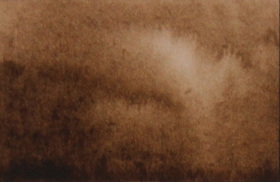
Raw Umber. Daniel Smith watercolour.
A natural cool brown. It should be dark and cool - leaning towards green rather than orange, and the best are made with PBr 7. Some brands are very light and of no real use as far as I can see. Best examples include Daniel Smith and Da Vinci.
Burnt Umber
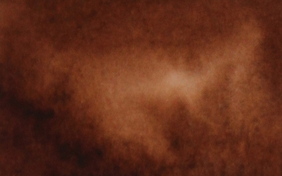
Burnt Umber. Daniel Smith watercolour.
A natural warm brown. Once again it should be a dark brown, leaning towards orange not green. The best examples are made with PBr 7 and include Da Vinci and Daniel Smith.
Indian Red
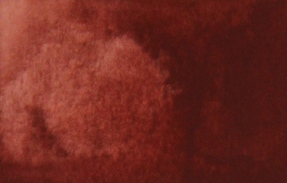
Indian Red. Daniel Smith watercolour.
Generally opaque.
PR 101
There are so many different paints made from PR101, and they range from red-browns to orange browns and from very opaque to very transparent. This is a classic deep Indian Red. Da Vinci makes a lovely slightly lighter version. I really like the earth pigments but this one does need to be washed on and left alone. It is actually useful for flesh tones especially lips and eyes.
PR 101
There are so many different paints made from PR101, and they range from red-browns to orange browns and from very opaque to very transparent. This is a classic deep Indian Red. Da Vinci makes a lovely slightly lighter version. I really like the earth pigments but this one does need to be washed on and left alone. It is actually useful for flesh tones especially lips and eyes.
Buff Titanium
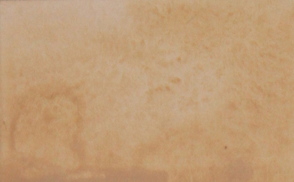
Buff Titanuim. Daniel Smith watercolour.
A wonderful granulating cream pigment. Granulates in a wash. Fabulous for sandy beaches, shells and pastel florals. This is an unusual choice for watercolour, but as I paint a lot of landscapes, especially featuring Australian sandstone, this is one of my top pigments.
PW 6:1
PW 6:1